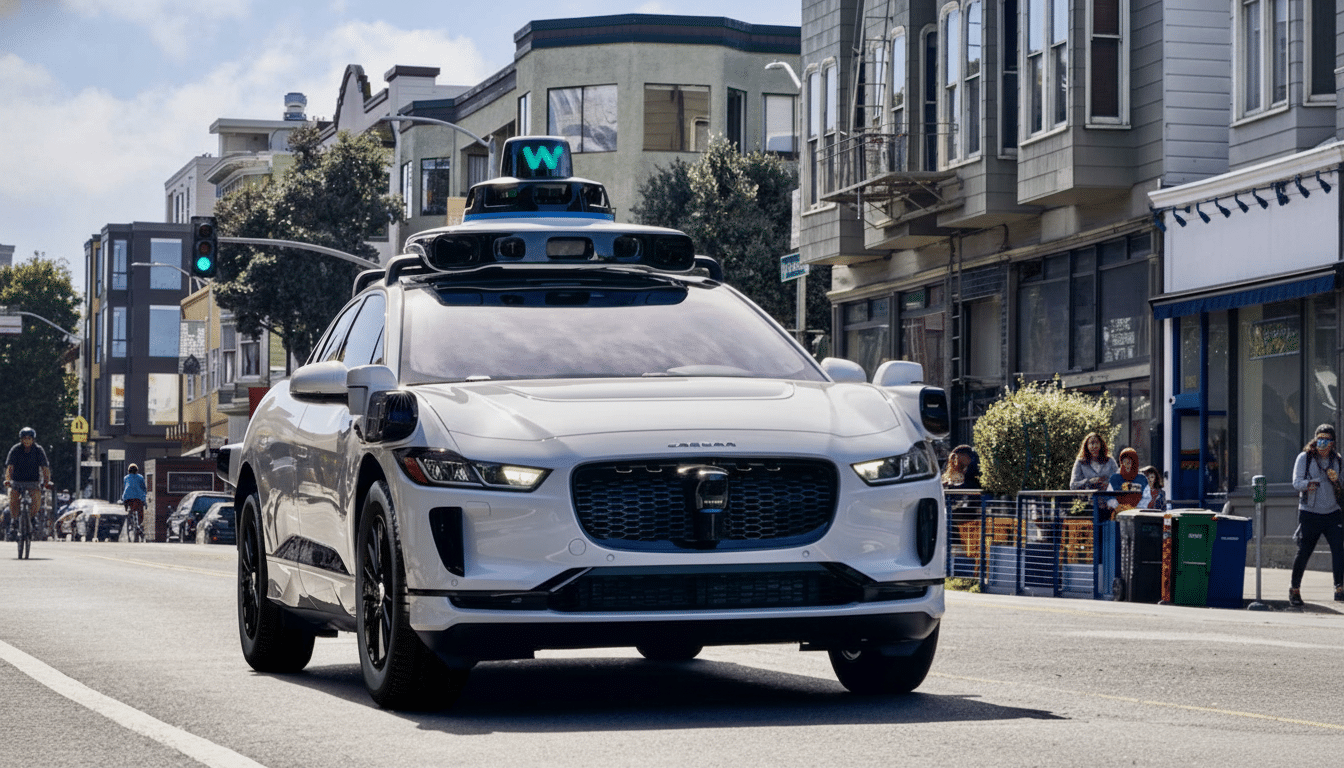Waymo is taking its driverless taxi service to the freeway, at least in parts of the San Francisco Bay Area, Phoenix and Los Angeles. The company says that the new service will be available to more riders in those markets, so what you’re seeing is a move away from predominantly surface-street routes to higher-speed, cross-town travel that is closer to how people actually traverse these big metro areas.
Waymo is casting this as a logical step for its autonomous system after years of training, validation and supervised testing. As NBC News noted, company leaders have long said freeway autonomy is easy to try but hard to do at scale without a human fallback — making today’s rollout an important milestone.

Why the Freeway Matters for Autonomy in Robotaxis
Highways enable faster travel, more direct connections between people and places, and greater consistency in the time it takes to get where you are going. But as teeming as city streets are with pedestrians, cyclists and unprotected left turns, highways substitute those challenges for high-speed merges, lane discipline and split-second decision-making at ramps and interchanges. Having that balance just right is key to building the trust of a rider.
Technically, the addition of freeway driving performance requires that the Waymo Driver be able to conduct lookahead planning at longer distances and navigate safe and efficient merges, adapt to changing traffic speeds, and interpret signage and lane markings in complex interchanges — all while reacting in a natural manner to aggressive or unpredictable human drivers. Behind the scenes, that means rock-solid perception at distance, high-definition maps and behavior prediction tailored to dense, fast-moving traffic.
Where Service Begins and How It Is Paced
Highway routing will start rolling out to Waymo One riders in the Bay Area, greater Phoenix and Los Angeles. Availability will “grow over time,” Waymo says, implying a corridor-by-corridor strategy that allows the company to confirm performance and customer ride quality before moving on to wider areas of coverage.
The company earlier did supervised freeway testing in Phoenix, where safety operators would vet human-like behaviors such as on-ramp acceleration, lane changing and off-ramp deceleration. With startup, that work transfers to rider-only operations across narrowly defined service areas. Waymo also suggests it’s looking to expand in additional cities — notably Austin and Atlanta — with longer-term market aspirations in cities like London, Dallas and Nashville.
Claims of Safety and Ongoing Federal Scrutiny
Waymo claims its robotaxis are safer than human drivers, based on internal data that indicate far fewer crashes causing injuries to pedestrians, cyclists and motorcyclists compared with human benchmarks under comparable conditions. The company has now accumulated millions of miles in autonomous mode without a driver in the car and often cites its approach to safety, which includes extensive testing that blends simulation with real-world driving.

Regulators remain deeply involved. The National Highway Traffic Safety Administration opened an investigation after 22 reported incidents in which Waymo’s driverless vehicles made contact with stationary objects, or may have disregarded a traffic-control device. Federal officials are also investigating an incident in which a Waymo went around a fully stopped school bus. And in a separate move, Waymo voluntarily recalled 1,212 self-driving taxis and updated its software to lower the potential of colliding with stationary vehicles.
That sort of oversight is typical for the industry. Permit conditions, operating areas and even the power to temporarily halt or amend service for safety reasons are set by state and local agencies — including departments of transportation and public utilities commissions. That the expectation goes out the window when you get onto freeways is not only absurd; it’s a higher hurdle than continuous real-time monitoring and reporting.
What Riders Can Expect from Highway-Enabled Trips
In practice, riders might see trip estimates that now include highway segments if they offer a time or reliability advantage. The system picks routes on the fly, so a robotaxi might take side streets during extremely heavy traffic or construction and then revert to a freeway once the bottleneck clears. The experience should be mundane — unobtrusive merges, consistent lane keeping, and confident but safe overtakes — even as the car navigates complicated traffic flows.
Freeway ability also opens up the types of trips robotaxis can accept: airport pickups that span more than one city, crosstown commutes that rely on interstates and late-night excursions when freeways are the most direct path. The company’s stack is built with redundancy as well as remote diagnostics tools; when conditions are outside the system’s operational envelope, a secondary system can kick in and allow the car to renegotiate its route or wait for an appropriate gap to merge, or avoid the freeway entirely.
The Road Ahead for Scaling Freeway Robotaxi Service
For ride-hailing with autonomous vehicles to catch on, it has to offer convenience and speed — not novelty alone. Freeways as a lever for shorter travel times and higher vehicle utilization is a major unlock that reduces service unreliability, coupled with its effect on economics. It also provides Waymo with a clearer blueprint for bringing service to new cities that share similar highway infrastructure.
The next phase will be one of measured growth: more corridors, more riders, more hours in operation, and further dialogue with regulators and independent researchers. If it does manage to maintain both robust safety results and improved trip efficiency, freeway autonomy may no longer be the exception but rather the rule for robotaxis in major metros.

